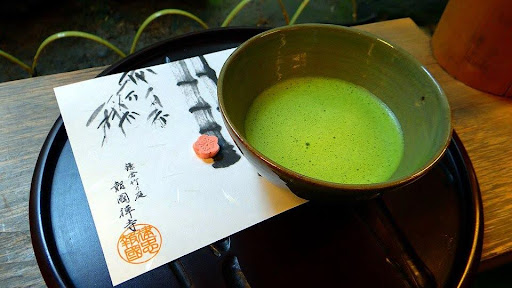
Photo Credits: Creative Common License on Wikimedia commons
Sriridhe G.P1, Vinothagan.S 1
16 September 2025
Research Scholar, Department of Vegetable Science, Horticultural College and Research Institute, Tamil Nadu Agricultural University, Coimbatore, India – 641003
The convergence of India’s Moringa oleifera—dubbed the “miracle tree”—and Japan’s revered ceremonial matcha green tea heralds a new era of functional beverages. By blending Moringa’s dense nutritional profile and adaptogenic properties with matcha’s potent catechins and ceremonial heritage, this Japan–India collaboration is creating a beverage category that addresses modern wellness demands, promotes sustainable agriculture, and opens lucrative markets across Asia and beyond.
1. Introduction: The Rising Demand for Functional Beverages
Functional beverages—drinks with added health benefits beyond basic nutrition—are experiencing an unprecedented surge, valued at USD 140 billion worldwide in 2024 and projected to reach USD 220 billion by 2030. Consumers seek drinks that support immunity, cognitive function, and stress resilience. In this context, Moringa and matcha stand out:
Combining these superleaf powders produces a beverage with a comprehensive phytochemical spectrum, catering to holistic health trends in Asia, North America, and Europe.
2. Agronomic Practices and Cultivation Synergies
2.1 Moringa Cultivation in India
India leads global Moringa production, with 200,000 hectares under cultivation across Tamil Nadu, Andhra Pradesh, and Maharashtra. Traditional practices include:
2.2 Matcha Production in Japan
Matcha cultivation centers in Uji (Kyoto), Nishio (Aichi), and Shizuoka, covering 3,500 hectares. Key practices:
2.3 Integrating Agri-technologies
Collaboration between Indian agricultural universities and Japan’s Tea Research Association is exploring:
3. Phytochemical Synergy and Health Impacts
3.1 Nutritional Composition Comparison
|
Metric |
Moringa Powder |
Matcha Powder |
|
Protein |
25 g/100 g |
20 g/100 g |
|
Vitamin C |
220 mg/100 g |
1.2 mg/100 g |
|
EGCG |
0 mg |
1,200 mg/100 g |
|
Quercetin |
100 mg/100 g |
10 mg/100 g |
|
L-Theanine |
0 mg |
33 mg/100 g |
|
Calcium |
2,000 mg/100 g |
140 mg/100 g |
Combining 2 g of each powder per serving yields:
3.2 Bioavailability Enhancements
Studies demonstrate that catechin absorption improves when co-ingested with vitamin C and quercetin—antioxidant-rich Moringa facilitates 25% greater EGCG plasma levels. Additionally, Moringa’s unsaturated fatty acids aid lipophilic nutrient uptake, further enhancing matcha catechin bioavailability.
3.3 Clinical Evidence
4. Processing, Formulation, and Quality Assurance
4.1 Hygienic Drying and Micronization
Moringa leaves are steam-blanched at 95 °C for 30 s to deactivate polyphenol oxidase, preserving green color, then dried under 45 °C to retain nutrients. Cryogenic milling produces particle sizes under 50 µm, matching matcha’s solubility.
4.2 Standardized Blending Ratios
Sensory optimization trials identified a 1:1 ratio as balancing grassy matcha umami with Moringa’s mild astringency. Flavor profiles were analyzed via gas chromatography–mass spectrometry, ensuring consistent volatile compound levels (e.g., hexenal, linalool).
4.3 Shelf-Life and Stability
Accelerated shelf-life testing at 40 °C/75% RH over 6 months indicated <5% loss in chlorophyll and catechins. Microbial safety meets Codex Alimentarius standards, with total plate counts <10^2 CFU/g and absence of heavy metals.
5. Market Development and Consumer Insights
5.1 Target Segments
5.2 Branding and Positioning
Co-branded as “MoraMatcha Synergy”, the product leverages India’s Moringa heritage and Japan’s matcha tradition. Packaging uses sustainable tin canisters with bi-lingual labeling, emphasizing traceability with QR codes linking to farm origin data on blockchain platforms.
5.3 Distribution Channels
6. Sustainability and Socioeconomic Impact
6.1 Environmental Benefits
7. Research and Future Innovations
7.1 Novel Formulations
7.2 Clinical Trials and Health Claims
Planned multicenter studies on endothelial function, gut microbiome modulation, and neuroprotective biomarkers will substantiate health claims and support novel nutraceutical approvals in Japan and India.
7.3 Biotechnological Advances
Genome editing (CRISPR) in Moringa to increase leaf chlorophyll and antioxidant content, coupled with shading innovations for matcha to further elevate L-theanine levels, will push the phytonutrient envelope of future MoraMatcha blends.
8. Challenges and Mitigation Strategies
8.1 Supply Chain Complexity
Sourcing consistent-quality Moringa leaf across diverse Indian climates and synchronizing harvest cycles with matcha production requires robust logistics planning. Blockchain-enabled traceability and IoT-based moisture sensors in storage mitigate post-harvest losses.
8.2 Regulatory Hurdles
Health claim approvals differ between Food Safety and Standards Authority of India (FSSAI) and Japan’s Health Food Regulation (FOSHU). Joint regulatory working groups ensure harmonized dossiers and expedited approvals.
8.3 Consumer Education
Taste adaptation and consumer familiarity are addressed through experiential marketing—pop-up tasting booths, educational workshops, and influencer partnerships to showcase MoraMatcha’s versatility.
9. Conclusion
The Moringa Meets Matcha fusion exemplifies the transformative potential of agro-cultural collaborations. By marrying India’s “tree of life” with Japan’s ceremonial superleaf, the MoraMatcha initiative creates a beverage that satisfies modern consumers’ cravings for authenticity, efficacy, and sustainability. Beyond market success, this partnership fosters knowledge exchange, farmer empowerment, and climate resilience, charting a blueprint for future Japan–India innovations in functional foods and beverages. As the global wellness market continues to expand, MoraMatcha stands poised to redefine the superleaf category—one leaf, one cup, and one community at a time.